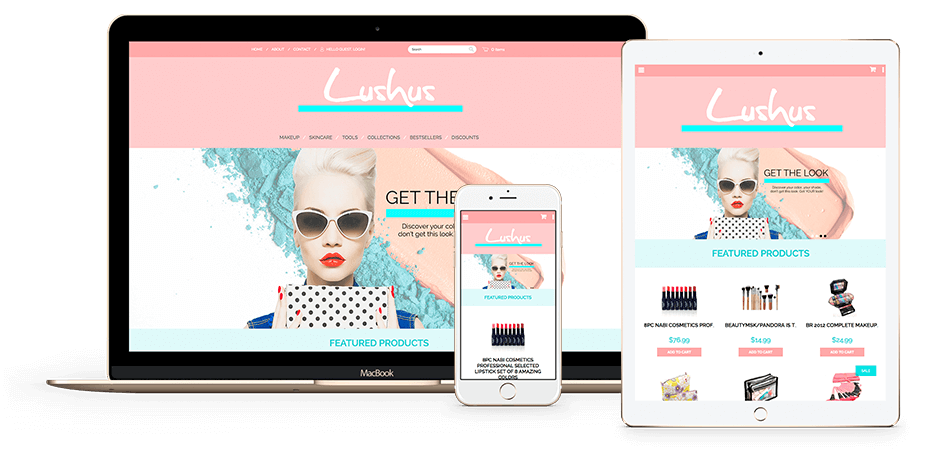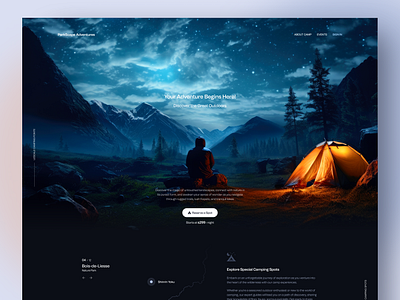Modern Website Design That Captures Interest and Transforms
In an increasingly electronic landscape, contemporary website style has actually arised as a critical variable in catching customer interest and driving conversions. As we discover these vital elements, it comes to be clear that recognizing their interplay can dramatically influence a website's efficiency and user fulfillment.
Value of Visual Hierarchy
Aesthetic pecking order is an essential element in website layout, as it guides individuals' focus and boosts their general experience. By strategically organizing web content, designers can route customers to the most crucial information first, thus increasing interaction and improving functionality. Reliable visual power structure utilizes various strategies, consisting of dimension, spacing, color, and comparison. Larger aspects normally attract the eye, while contrasting colors can emphasize crucial messages, making them stand out amongst more controlled parts.
Integrating a sensible circulation in material plan is essential; for example, putting one of the most important information on top of a page fosters instant recognition. Regular usage of typography, such as varying font dimensions and styles, helps develop a clear material structure. This company not only help in navigation but likewise builds trust fund, as individuals really feel a lot more comfortable when they can easily locate what they are searching for.
Inevitably, a well-executed aesthetic power structure not only boosts aesthetic charm but likewise substantially affects customer behavior. By focusing on essential elements and ensuring a smooth experience, designers can effectively transform visitors right into consumers, reinforcing the importance of this foundational design principle in contemporary internet site growth.
Responsive Design for All Gadgets
Creating a smooth experience across various gadgets is necessary in today's digital landscape, where customers gain access to websites from tablet computers, mobile phones, and desktop computers alike. Receptive design is an essential strategy that guarantees web sites adapt fluidly to different display resolutions, dimensions, and orientations. By employing versatile grids, images, and CSS media questions, designers can create formats that keep aesthetic stability and performance, no matter the device being utilized.
The value of responsive layout extends past visual appeals; it directly affects user interaction and conversion rates. An internet site that operates well on all gadgets motivates longer visits and reduces bounce prices, as individuals are extra most likely to communicate with web content that is simple to navigate. Search engines, particularly Google, focus on mobile-friendly sites in their rankings, making receptive layout a vital part of search engine optimization (SEO)
Integrating responsive design not just boosts customer experience but also enhances the advancement procedure. By creating a single site that works across tools, organizations can save time and sources contrasted to developing different mobile and desktop versions. Inevitably, receptive design is an essential approach for contemporary internet site style, ensuring accessibility and satisfaction for all customers, no matter of their tool.
Engaging Interactive Aspects
While a responsive style lays the foundation for a useful web site, including appealing interactive aspects is important for catching individual attention and fostering deeper links. Website Design. Interactive aspects, such as animations, tests, and clickable infographics, create an extra vibrant user experience, motivating visitors to invest more time on the website
Including interactive features can also direct customers via complex info, making it less complicated to digest material. Interactive sliders can show product variations, while ingrained video clips can provide demos or endorsements that resonate more than fixed images or message. Gamification strategies, like rewards for involving or completing jobs with material, can boost individual inspiration and retention.
Efficient use of interactive aspects not just improves the user experience but can look at this now additionally result in greater conversion prices. By making interactions satisfying and insightful, services can cultivate a feeling of loyalty and depend on with their target market. Nevertheless, it is necessary to stabilize interactivity with performance; overly complicated functions might hinder website speed, adversely affecting user complete satisfaction. Eventually, integrating well-designed interactive components can substantially elevate a web site's efficacy, driving involvement and conversions in today's competitive electronic landscape.
Streamlined Navigation Practices
Reliable navigating is a foundation of any type of successful website, as it straight influences user experience and content availability. Structured navigation techniques make sure that individuals can conveniently find details, enhancing their interaction with the site. A well-structured navigating food selection must be intuitive and straightforward, commonly featuring see this here a minimal number of primary groups to stay clear of frustrating site visitors.
To accomplish structured navigating, designers need to focus on a hierarchical framework that logically arranges material. Implementing breadcrumb trails can supply customers with context concerning their current area within the site, enabling smooth backtracking. Furthermore, utilizing drop-down menus can properly conserve room while still supplying access to subcategories.
Responsive layout is critical, as navigating should be useful across all tools (Website Design). Mobile individuals, specifically, take advantage of touch-friendly menus and retractable sections that preserve functionality without jeopardizing looks

Efficient Call-to-Action Techniques
A well-crafted call-to-action (CTA) is important for assisting users toward desired results on a web site, as it motivates them to involve with material or make a purchase. To maximize their effectiveness, CTAs ought to be clear, compelling, and tactically positioned throughout the site.
First, utilize action-oriented language that interacts seriousness or worth, such as "Start," "Join Currently," or "Insurance claim Your Discount." This language not only motivates customers yet likewise sets clear expectations about the following steps.
Second, consider style aspects; CTAs should attract attention visually via contrasting shades, enough whitespace, and popular positioning. A switch that is simple to see and click boosts the likelihood of customer interaction.
Furthermore, personalizing CTAs based upon customer habits or demographics can substantially improve involvement. Customized messages reverberate a lot more with individuals, driving higher conversion prices.

Final Thought
To conclude, modern web site style emphasizes the assimilation of aesthetic power structure, receptive designs, involving interactive components, streamlined navigation, and efficient call-to-action strategies. These components collectively boost user experience, guaranteeing that visitors remain involved and encouraged to check out content better. By focusing on these design principles, organizations can significantly enhance individual retention and conversion prices, eventually resulting in higher success in the electronic landscape. The constant advancement of web style emphasizes its crucial function in effective on the internet communication and advertising and marketing.
In an increasingly digital landscape, modern web site style has actually arised as a crucial variable in catching customer attention and driving conversions.Visual hierarchy is an important element in web site style, as it guides individuals' attention and boosts their overall experience.The value of receptive layout extends past appearances; it straight impacts individual involvement and conversion rates.Integrating responsive design not only boosts individual experience but additionally enhances the advancement procedure. Eventually, responsive style is a fundamental strategy for modern-day web site design, making sure ease of access and complete satisfaction for all customers, regardless of their tool.